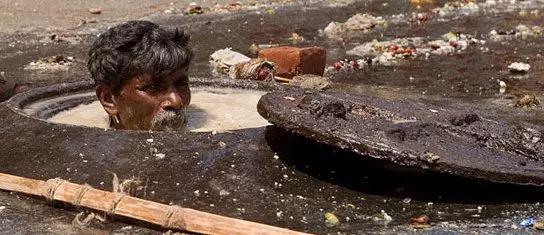
- Home
- India
- World
- Premium
- THE FEDERAL SPECIAL
- Analysis
- States
- Perspective
- Videos
- Sports
- Education
- Entertainment
- Elections
- Features
- Health
- Business
- Series
- In memoriam: Sheikh Mujibur Rahman
- Bishnoi's Men
- NEET TANGLE
- Economy Series
- Earth Day
- Kashmir’s Frozen Turbulence
- India@75
- The legend of Ramjanmabhoomi
- Liberalisation@30
- How to tame a dragon
- Celebrating biodiversity
- Farm Matters
- 50 days of solitude
- Bringing Migrants Home
- Budget 2020
- Jharkhand Votes
- The Federal Investigates
- The Federal Impact
- Vanishing Sand
- Gandhi @ 150
- Andhra Today
- Field report
- Operation Gulmarg
- Pandemic @1 Mn in India
- The Federal Year-End
- The Zero Year
- Science
- Brand studio
- Newsletter
- Elections 2024
- Events
- Home
- IndiaIndia
- World
- Analysis
- StatesStates
- PerspectivePerspective
- VideosVideos
- Sports
- Education
- Entertainment
- ElectionsElections
- Features
- Health
- BusinessBusiness
- Premium
- Loading...
Premium - Events

Change is coming in for manual scavengers, but it's the pace that is distressing for a country making rapid marches in some other fields
Last week, a sanitation worker died and two others were hospitalised while carrying out maintenance work on a Delhi Jal Board (DJB) pipe in the national capital. The outcome of a callous and brutal system that has barely seen any kind of reform.
Police said the three sanitation workers lost consciousness while manually cleaning the pipe. Two of them survived, while one began gasping for air and lost consciousness, passing away in a matter of minutes.
This incident is by no means unique. In December, The Indian Express, based on data obtained under the Right to Information (RTI) Act, reported that over the past 15 years, 94 people have died while cleaning sewers in Delhi.
Deeper malaise
National figures suggest a deeper malaise. Between 2019 and 2023, at least 377 sanitation workers in India died while cleaning sewers and septic tanks, government data tabled in Parliament said.
The government informed the Rajya Sabha that the deaths occurred when sanitation workers were involved in the hazardous task of cleaning sewer and septic tanks. These deaths are often attributed to exposure to lethal gases and lack of protective equipment and training.
Sanitation workers, or manual scavengers, are among the lowliest of the low in Indian society – so low that even lip service is not considered mandatory. They work in any part of the sanitation chain and ensure that people's contact with human waste ends when they leave the toilet. It's one of the most important jobs in society, yet mostly unseen and totally unappreciated.
A study conducted by advisory firm Dalberg Associates in 2018 estimated that there are 5 million sanitation workers in various urban locations across India. There is a good chance that this number may have gone up in recent years, or that it was even grossly underestimated back then.
Also read: Robotic machines to clean sewers: Chandigarh's latest move
Big challenges
One of the big challenges that the sanitation workers face – in addition to the hazards that they encounter in their day-to-today work – is the fact that various levels of governments don’t even count them. There are no reliable statistics of people engaged in this kind of work.
Clearly, a problem cannot be addressed without a detailed understanding of this labour force.
In such trying circumstances, frankly, even the actual number of deaths of sanitation workers is as much a mystery as the numbers engaged in the work. In July 2019, the National Commission for Safai Karamcharis (NCSK) revealed that at least 50 sanitation workers perished cleaning sewers in the first six months of 2019 alone, going by media reports limited to just eight states of India.
Organisations like Safai Karmachari Andolan say the counting by the government generally omits several sanitation workers employed as casual, contractual workers and migrant workers. The most vulnerable sanitation workers often work informally because of the stigma attached and the prohibition of the practice of manual scavenging by law.
Stigmatised caste system
The stigmatised caste system is the key determinant of the fate of these workers. People, families and communities, mainly Dalits, are compelled to perform these tasks which are not just hazardous and stigmatising but also highly underpaid. This not just confines them to sanitation work but also pushes them to accept the burden of inheritance and exploitation as social norms.
The ambit of sanitation work includes – but is not limited to – cleaning and sweeping of houses, streets, roads, institutional premises, railway lines, train toilets, community and public toilets, drains and sewers.
This also comprises handling of municipal waste of different kinds including hazardous medical waste, emptying, carrying and disposing human waste from dry latrines, getting into and emptying septic tanks of toilets at both household and community level.
Add to it, jobs (and occupations) like handling carcasses, cleaning leather, and managing dead bodies.
Also read: SC to Centre and states: Ensure eradication of manual sewer cleaning in phases
Hazardous conditions
Despite a ban on manual scavenging, the practice continues, and sewer systems are often poorly ventilated, making them highly dangerous. Sanitation workers slog in poorly ventilated sewers and septic tanks, where they are exposed to toxic gases like ammonia, carbon monoxide, and sulphur dioxide.
An overwhelming number of sanitation workers continue to face hazardous conditions and lack adequate technological support, leading to high risk of injury and death.
The workers, especially those involved in manual scavenging or cleaning sewers, often lack access to essential safety equipment and modern technologies. In most cases, they are exposed to hazardous gases, infectious diseases, and other health risks due to direct contact with waste.
Outdated infrastructure and a lack of 'zero human touch' design in new sanitation infrastructure contribute to the problem.
Health risks
Equally true, the technology available is often not suited to the diverse environments and types of sanitation work, leading to workers choosing not to use personal protective equipment or PPE, or using the same kit for all types of work.
Those who survive, face a wide range of health risks, including exposure to harmful gases, cardiovascular degeneration, musculoskeletal disorders, infections, skin problems, and permanent respiratory system problems.
Low convictions
Sadly, the situation has remained the same despite parliamentary legislation. The Prohibition of Employment as Manual Scavengers and Their Rehabilitation Act 2013, is a fine piece of legislation, but lacks the political backing or intent to implement its proposals on ground.
“The dehumanising practice of manual scavenging, arising from the continuing existence of insanitary latrines and a highly iniquitous caste system, still persists in various parts of the country, and the existing laws have not proved adequate in eliminating the twin evils of insanitary latrines and manual scavenging,” the Act notes.
Alarmingly, but not surprisingly, in many of these deaths, for which records are available, the level of convictions or compensation is still low.
For instance, in 75 of the 94 deaths in the last 15 years for which records are available, as reported by the Indian Express, only one case has led to justice for the victims in the form of a conviction in court.
The NCSK says they have been “reviewing sewer death/payment of compensation regularly with the states/UTs through letters to the chief secretaries and other authorities instructing them to clear pending cases of compensation in sewer death cases.” But clearly, a lot of ground needs to be covered here.
Slow pace
To be sure, change is coming in, but it's the pace that is distressing for a country making rapid marches in some other fields. The government has taken steps to address the issue, including allocating budgets for new technology to clean sewers, providing alternate employment for workers, and emphasising mechanical de-sludging and protective equipment.
The Department of Social Justice and Empowerment is implementing the National Action for Mechanised Sanitation Ecosystem (NAMASTE) Scheme to promote mechanization of sanitation and ensure safe cleaning. The government is also strengthening Emergency Response Sanitation Units (ERSUs) to ensure safe delivery of mechanized sanitation services.
What is needed, however, is not just governmental but also societal change. That is not on the anvil at the moment.(The Federal seeks to present views and opinions from all sides of the spectrum. The information, ideas or opinions in the articles are of the author and do not necessarily reflect the views of The Federal.)


